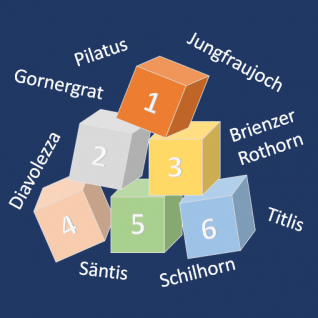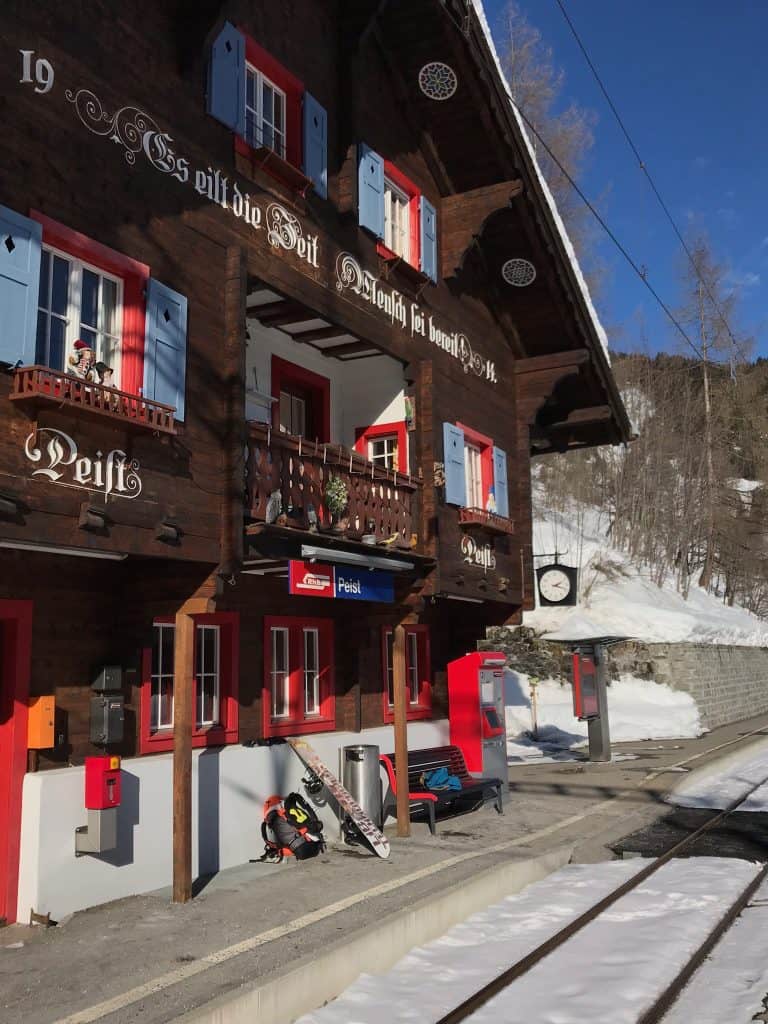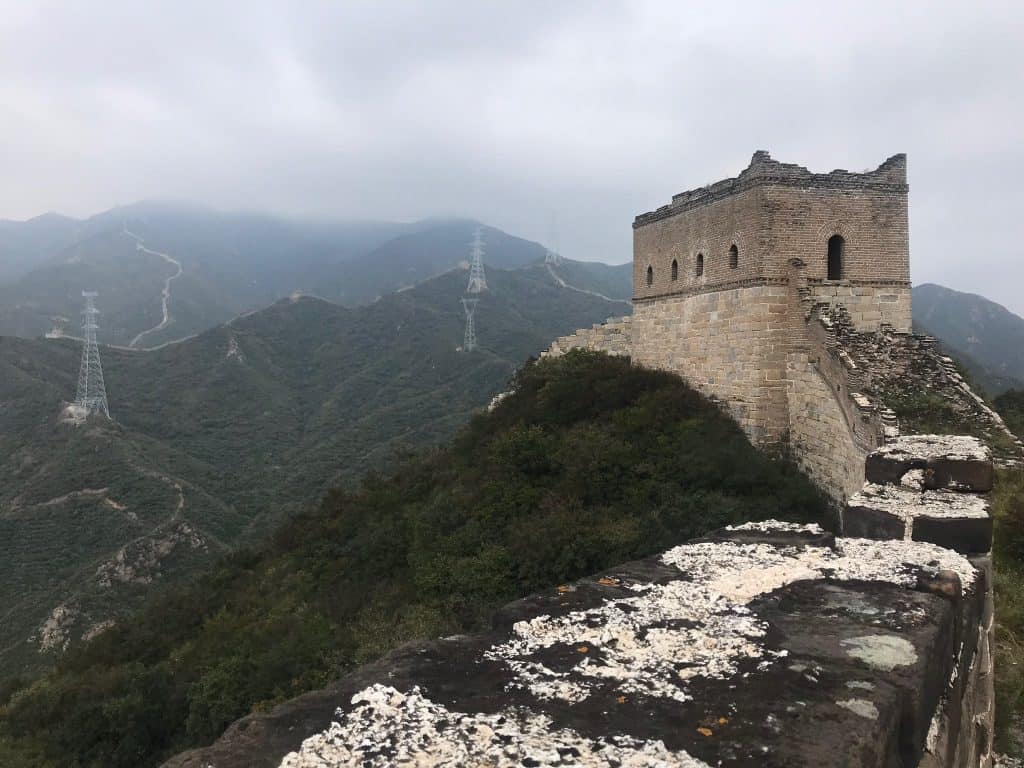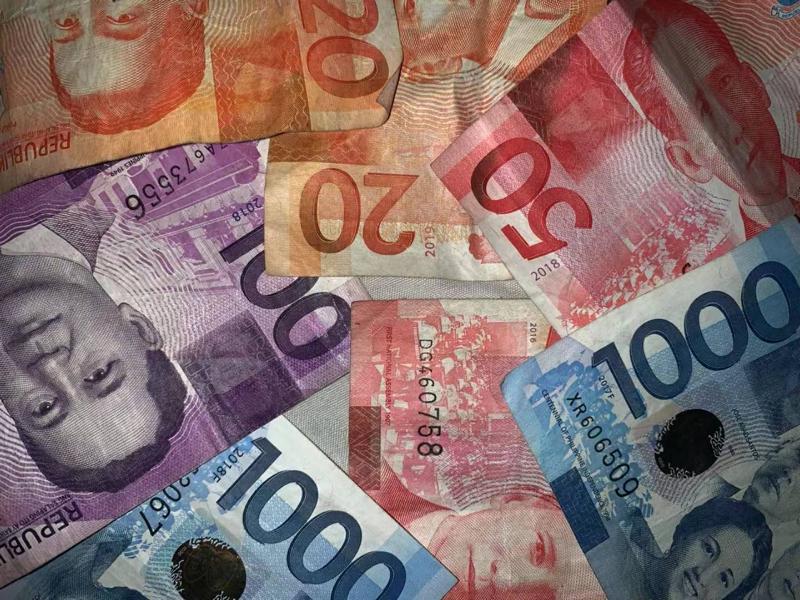Which is the best mountain top in Switzerland to visit? We ask the crowd to rank the best spots.
STAY GROUNDED IS NOT THE WORST THING
Introduction
Having done some extensive travels over the last few years in many different regions and to many different places in China, the planning of such a trip has taken us always down to the same question: which means of transport is the most convenient to take: TRAIN or PLANE?
As a novice traveller in China and due to the size of the country, we hardly only checked the various flight connections when it came to travel large distances. However, during the time and becoming more and more experienced, we realised that travelling even the far distances in China by train was often not only cheaper – in the end – it was as well much more convenient than taking the plane!
Furthermore, travelling by train is not only often more reliable (even in bad weather or during Chinese festive season), at the end when counting the overall travelling time from departing the origin destination until the arrival at your final destination, travelling by train often turned out to be faster than flying! Although, comparing only the duration of the flight with the duration of the train ride does say the opposite!
One of the worlds largest passenger railway network
As a fact within a bit more than one decade China has built one of the worlds largest passenger railway network in the world (around 139’000km in length) operating the longest high-speed network with more than 30’000km of length by the end of 2019, with average speeds of more than 200km/h and a maximum speed of up to 350km/h! In fact it is said that by the end of 2020 the high-speed railway network will cover 80% of the major cities in China!
For an overview of the major standard and high-speed train lines running from North-to-South and from East-to-West visit the website by following this link:
https://www.travelchinaguide.com/china-trains/
Hence, despite the fact some people may say that “the purpose of travelling is the travel itself”, we wondered, if it’s possible to make a rule based recommendation whether to take a train or the plane to travel a certain distance within 2 destinations in China or not? A recommendation which does purely focus on the goal “the faster the better”!
To come up with a Rule/Recommendation
So, we picked out what we believe are the most popular cities and tourist sites in China and started to compare the train against the flight schedule online. On a random day we would pick the fastest connections between two cities and/or tourist sites and compare them between the two means of transport.
Given the fact that airports are often further away from a city or tourist site respectively train stations are often more closer or central and therefore consume less time to be reached by taxi/bus/train, we added an extra 2h to the duration of time as per flight schedule for each travel by plane (1h to reach the airport of the origin destination and 1h to get from the arriving airport to the final destination).
Above will end in the following rule for “Recommended Travel by Train”, when:
Fastest Train Connection =< Fastest Flying Time + 2h
Although, the above rule is fully based on a purely objective time criteria, the rule is still purely based on a subjective feeling by the people of Swinaworld in a way that we do think that
- more than 2h of travelling time in difference will be worth taking the plane, or vice versa
- less than 2h of travelling time will be worth boarding a train!
So, please bare in mind that we do not try to make rocket science here – we’re only aiming to give the unexperienced foreign traveller to China an idea or make a point to consider travelling by train when planning to travel to China.
Airports and train stations in China
Chinese airports
Airports in China do not differ much from other airports in the world as well as the procedure for the flying customer does not differ to other experiences:
- security check to enter the building
- check-in at the counter & baggage drop or self-check-in
- (custom if flying to/from Hongkong, Macau or Taiwan)
- security check
- proceed to the gate
- boarding the plane
Except maybe that quite often domestic flights in China are significantly delayed for all kind of reasons or even cancelled due to bad weather e.g. in typhoon season.
Chinese train stations
Orientation
(Modern) train stations in China are somehow quite different to the train station in the other parts of the world e.g. in Europe. From the size almost as big as many airports, the ticket counters are usually in the same building but need to be accessed from outside through a separate entrance.
In general, a modern train station in a big city in China is constructed most in a similar way, consisting of the following three floors/levels:
- underground floor/level (-1F): exit for arriving train passenger, access to the local subway/metro system as well often access for the official local taxi/buses (however, official local taxis & buses do run sometimes as well on ground floor);
- ground floor/level (bear in mind that in China the ground floor does count as first floor! So, look for sign “1F”): ticket office, main entrance with security check for access to the waiting zone, gates for boarding platforms and convenient stores (commercial areas);
- upper floor/level (2F): waiting zone for all train departures, access gates to boarding platforms and convenient stores (commercial areas);
Some train stations do even have more than three levels, e.g. Nanjing South Railway Station as shown in the picture below. These train stations do often put arrivals and departures on separate levels (similar to airports). In this case the rough structure looks like,
- underground floor (-1F): subway, taxi, bus;
- ground floor (1F): exit gates for arriving train passengers and sometimes ticket office;
- upper 1st floor (2F): ticket office, main access & main entrance for departures;
- up-der 2nd floor (3F): departures with waiting zone, gates to access boarding platforms & shops (commercial area);
Procedure for travelling by train
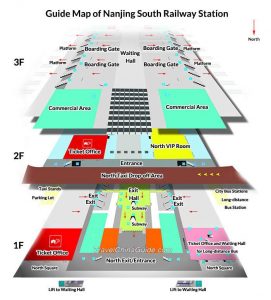
Once the traveler got his train ticket (e-ticket or paper ticket – see also section “Buying a train ticket”), the traveler is able to access the main part of building with the waiting zone, platform access and shops through another entry than the one of the ticket office and by providing the travel documents (e-ticket/train ticket and passport) and performing a brief security check on passenger and luggage. Hence, the whole procedure at the train station looks as follows:
- (if still necessary get valid train ticket at ticket counter)
- at main entrance of train station check travel documents & security check
- go to the waiting hall often on the 2nd floor and go to the respective number of the train boarding gate as shown on the ticket
- wait in front of the gate until the respective train is ready to board the platform (respective train number appears above the gate in green letters)
- board to the respective platform often taking the stairs/elevator down to the 1st floor
- proceed to the left or right side of the platform and to the respective car number as shown on the various signs and written on the ground on the platform
- queue up in front of the right car number and wait for the train to arrive
- board the train to the right car number and find your seat number as shown on the train ticket. Lean back and relax!
Type of trains in China
Similar to other countries China also does have not only different class of train tickets (e.g. first/business, economy class), it also has different type of trains from very old and slow ones to the world famous and state of the art fastest high-speed trains. A rough overview of the different available type of trains is given below:
- G High-Speed Electric Multiple Units (EMU) Train (fastest trains up to 350km/h)
- C Intercity Electric Multiple Units (EMU) Train (up to 120km/h)
- D Electric Multiple Units (EMU) Train (up to 250km/h)
- K Fast Train (soft & hard sleeper and soft & hard seater available; up to 120km/h)
- L Temporary Train (not recommended)
- Z Direct Express Train (soft & hard sleeper and soft & hard seater available; up to 160km/h)
- T Express Train (soft & hard sleeper and soft & hard seater available; up to 140km/h)
- 4-digit Four-digit Number or as well called Regular Speed Train with no letter prefix are the local and slowest trains in China and unless you’re on a very tight budget or into a hardcore lifetime travel experience are not recommended to board.
Each train in China got an unique identification number which starts with the above letter as a prefix to show what type of train it is followed by a number of up to 4 digits.
Beside this train number the ticket shows departing & arrival destination and time, boarding platform number with A or B indicating which side of the waiting hall to board the train), car and seat number and name and passport number of the traveler.
Obviously the price of the train ticket does depend on the type of train and the class of travel you choose. For more detailed information refer to other websites such as https://www.topchinatravel.com/customer-center/types-of-china-train.htm
Buying a train ticket in China
Buying a train ticket in China is slightly different to elsewhere in the way that you’re still able ot buy train tickets online providing your name as per passport and your passport number.
However up until today, once having bought a train ticket online and having received a confirmation with a valid e-ticket number, foreigners still had to queue up at the ticket counter at the train station to get the valid train ticket by providing the valid ticket confirmation with the e-ticket number together with the valid passport. Usually, this was causing a lot of hassle for the foreign traveler as usually there are many people travelling in China and queues can be very long and chaotic and on top, in most of the train stations all the different type of ticket counters are only stated in Chinese not in English.
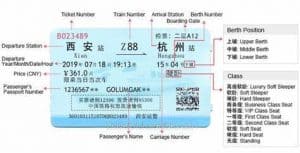 Now a day it is said that this is no longer needed as the ticket confirmation with the valid e-ticket number and the valid passport is enough to enter the train station and to board the train. However, it’s quite likely that not all modern train stations in China did already upgrade their system accordingly. So, we recommend that you still get your valid train ticket at the ticket office unless you want to try whether you are able to access the train station without or not. This way you might be refused at the security check to enter the train station and be told to get your valid train ticket at the ticket office. See above an example of a standard train ticket in China with explanations of all the information contained and shown on the ticket.
Now a day it is said that this is no longer needed as the ticket confirmation with the valid e-ticket number and the valid passport is enough to enter the train station and to board the train. However, it’s quite likely that not all modern train stations in China did already upgrade their system accordingly. So, we recommend that you still get your valid train ticket at the ticket office unless you want to try whether you are able to access the train station without or not. This way you might be refused at the security check to enter the train station and be told to get your valid train ticket at the ticket office. See above an example of a standard train ticket in China with explanations of all the information contained and shown on the ticket.
Buying a plane ticket in China
Buying a plane ticket in China is actually not different to buying a plane ticket anywhere else in the world. The easiest and probably cheapest way is to check availability buy a ticket online on one of the well-known booking platforms such as C/Trip.com, ebookers.com, skyscanner.com. Having bought a ticket and received a confirmation with a valid e-ticket number you will be able to proceed to the check-in counter to receive your boarding card. Same procedure as anywhere!
Important for travelling by train or plane
Regardless whether you are taking the train or plane in China it is IMPORTANT that you keep your ticket until the end of your journey as
- for the train you need the ticket to be able to exit the train platform at your arrival destination whereas
- for the plane you will need to show your ticket when taking your luggage from the baggage belt to proceed to the exit.
Throwing away the ticket before the end of your journey will just cause unnecessary problems.
Train versus plane: Pros & Cons
Train “Pros & Cons”
Pros:
- Environmental friendlier than flying
- In general cheaper than flying / different types of trains for different budgets (e.g. standard trains, high speed trains, soft/hard night sleepers)
- On time/reliable/safe
- Comfortable (able to move around)
- Enjoy changing landscapes / part of travelling experience
- Train station often quite close to the city center and/or tourist attractions
- No baggage allowance & less “dangerous” goods (e.g. liquids < 100ml)
Cons:
- Unlikely to find any English speaking staff
- Net travelling time still longer than flying
Plane “Pros & Cons”
Pros:
- Net travelling time still faster
- In case to connect to another flight shorter transfer time (within same airport)
- More likely some staff to be able to speak English
Cons:
- Not environmental friendly (CO2 emission)
- Airport often far away from city center and/or tourist attractions
- Stricter baggage allowance & more “dangerous” goods (e.g. liquids < 100ml, power banks < 10000hA)
- Most likely more expensive than train
- High chances for delays especially at Chinese holidays (even in good weathers)
Time comparison and recommendation
The blue box above shows our travel time comparison and recommendation tool for travelling within China. And here is how it works:
- The map of China shows the selection of the most popular Chinese cities and the most popular tourist destinations for international travelers to China (selection made by Swinaworld).
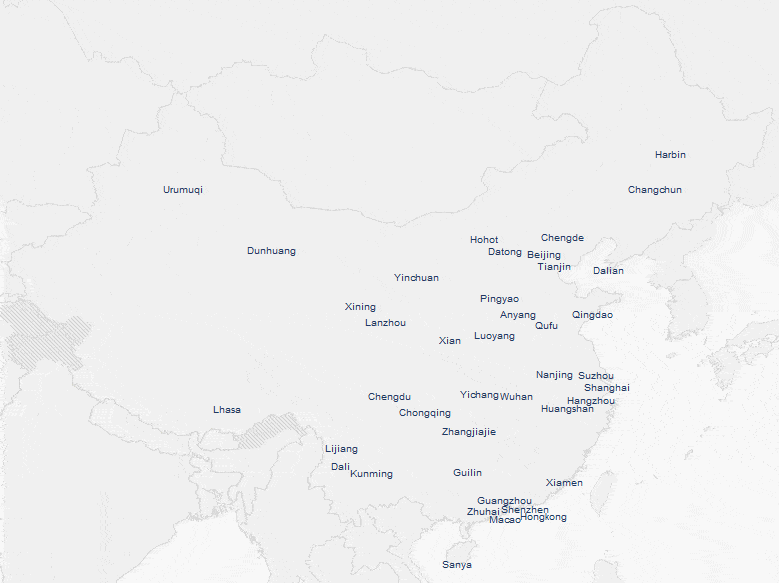
- The user selects departure and arrival destination in the selection box and runs the query button.
- The result will show the fastest time of travel between the two selected destinations. In case the fastest travel is not a direct connection, the resulting time does include the time for transfer.
- Our recommendation is only based on the criteria how much time the journey will take. This mainly as we believe that many of the other criteria are depending on the persons preferences as well as the cost of transportation vary a lot depending on the availability and the time of travel (e.g. during Chinese holidays). Therefore our recommendation is based on the following rule: train(t) < plane(t) + 2h
Bear in mind that however travelling by train might take much more time than taking the plane, it is:
- quite easy to make a stop at another interesting destination somewhere in between (e.g. when travelling from Beijing to Shanghai make an overnight stop in Nanjing and/or Suzhou or from Beijing to Xi’an make an overnight stop in Pingyao) or even to
- safe on a hotel accommodation for one night at your arriving destination when you board a night train instead.
For tips on booking hotel accommodation and best hotel booking sites in China see as well our blog https://www.swinaworld.com/best-hotel-booking-china/ .
Related posts:
Switzerland Cheap Ways to Travel
Cheap ways to travel around in Switzerland.
International Flights to China
Intercontinental direct flights to China: It does not always have to be Shanghai or Beijing!
The Great Wall of China
A ‘must place to visit’ when planning a trip to China. Huge in length, astonishing in appearance and a great witness of history!
Best hotel booking site Philippines
Which is the best hotel booking site for Philippines? We made an analysis and compared five popular online travel agencies.
Best hotel booking site China
Which is the best hotel booking site for China? We made an analysis and compared five popular online travel agencies.
Sablayan Philippines
Sablayan in Occidental Mindoro is my favorite place in the Philippines. It provides everything you need for an adventurous but also relaxing time. An introduction.
Best hotel booking site Switzerland
What’s the best hotel booking practice for Switzerland? We made an analysis. Here we share our results and recommendations.
Best hotel booking site
Which is the best hotel booking site? From our experience, it depends on the geographical area. Here our evaluation and our tips.
Cash withdrawal Philippines
High fees and low limits: Here my experiences when withdrawing money in the Philippines – and the best option included.

